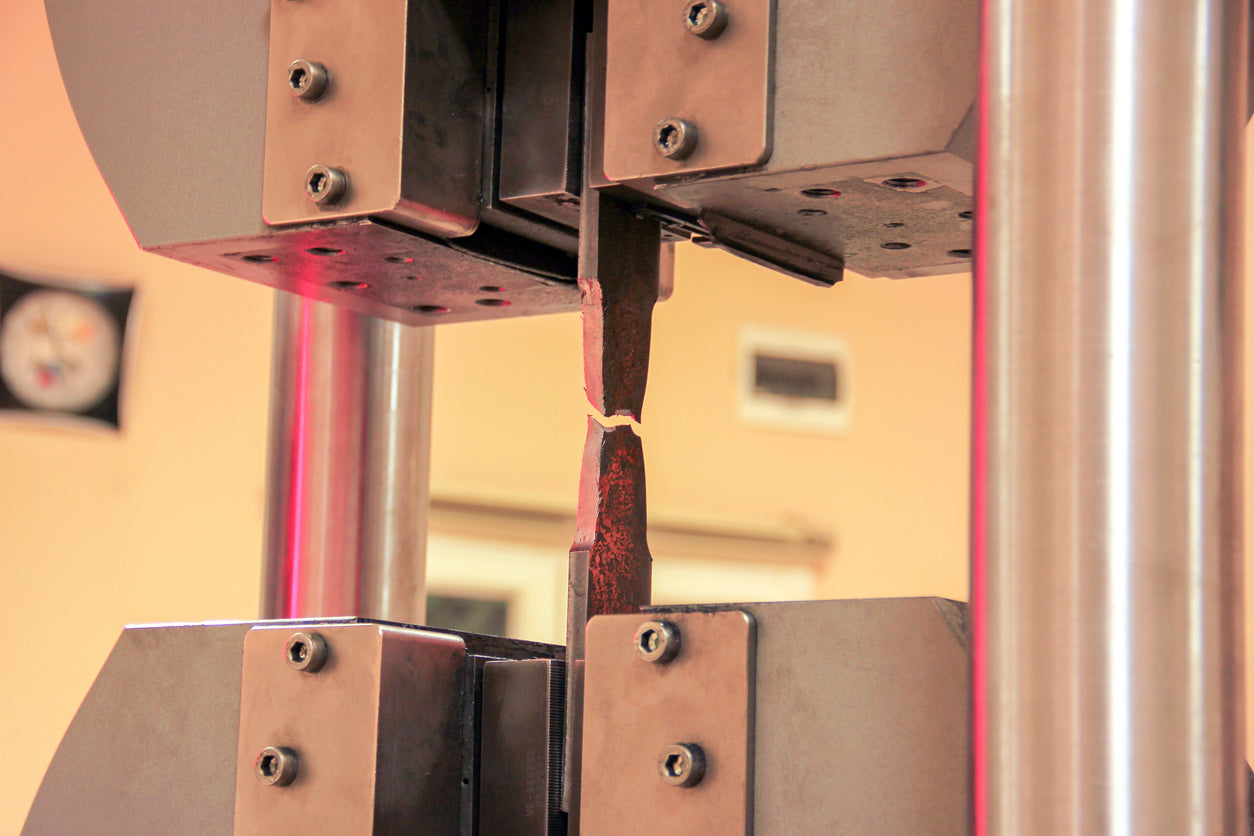What Is Destructive Weld Testing?
Destructive weld testing involves physically breaking or sectioning a welded joint to evaluate its internal structure, strength, and overall quality. Unlike nondestructive testing, which assesses welds without causing damage, destructive testing allows students to see firsthand how factors like lack of fusion, slack inclusion and other internal defects impact weld integrity. This method provides a practical, tangible way to reinforce welding principles and identify areas for improvement. It is commonly used in welding procedure specification (WPS) and welder performance qualification, failure analysis, and sampling inspection to verify weld quality in critical applications such as bridges, buildings, and pressure vessels.
Benefits of Using Destructive Testing Equipment in Welding Education
Improves Student Understanding
Hands-on learning is essential for welding students, and destructive weld testing offers a direct way to visualize and understand weld quality. By analyzing cross-sections of their own welds, students gain insight into fusion depth, heat-affected zones, and structural integrity. This approach helps bridge the gap between theoretical knowledge and practical application.
Reinforces Proper Welding Techniques
By incorporating destructive weld testing into the curriculum, instructors can highlight common welding mistakes and demonstrate their consequences. Seeing firsthand how poor fusion or incorrect settings affect weld strength encourages students to refine their technique and develop better welding habits.
Prepares Students for Industry Standards
Many welding certifications and job qualifications require knowledge of destructive weld testing procedures. Exposing students to these tests early ensures they are better prepared for industry requirements and certification tests. Familiarity with destructive weld testing equipment can also give students an edge when seeking employment in welding-related fields. Testing procedures must align with ASME, AWS, API, and MIL-STD standards, which are commonly used in the welding industry.
Encourages Problem-Solving and Critical Thinking
Destructive weld testing challenges students to analyze and interpret test results, fostering problem-solving and critical thinking skills. When students identify defects in their welds, they can adjust their approach, test new parameters, and refine their welding techniques based on real data rather than trial and error.
Common Types of Destructive Weld Testing
Bend Testing
Bend testing evaluates the ductility of a welded joint by bending the weld sample until failure occurs. This method is useful for demonstrating weld soundness and identifying discontinuities such as lack of fusion, slag inclusion or other internal defects. The bend radius is determined by the material properties, and samples are typically bent to 180 degrees to assess weld soundness.
Macro Etch Testing
Macro etch testing involves cutting a weld sample and applying an etching solution—such as hydrochloric acid, ammonium persulfate, or nitric acid—to reveal internal structures. This test allows students to see weld bead profiles, penetration depth, and heat-affected zones, providing a clear visual representation of weld quality.
Fillet Weld Break Test
The fillet weld break test applies force to a sample fillet weld until failure occurs or specimen bends flat upon itself. This test is useful for detecting lack of fusion, slag inclusions, and internal porosity over the entire weld length rather than just a cross-sectional snapshot. It is often used alongside macro etch testing for a more comprehensive assessment.
Tensile Testing
Tensile testing measures the ultimate tensile strength (UTS) of a weld by pulling the sample until fracture occurs. The UTS is calculated by dividing the maximum load by the cross-sectional area, helping students understand how different welding parameters impact material strength and durability.
Impact Testing
Impact testing determines a weld’s ability to absorb energy under sudden force, mimicking real-world stresses. This test is particularly useful for industries requiring high-strength welds at low temperature, such as construction and heavy equipment manufacturing. Methods such as Charpy and Drop Weight testing assess weld toughness under different impact conditions.
Nick Break Test
The nick break test is used to detect internal defects such as slag inclusions, porosity, and incomplete fusion by breaking the weld at a notched section. The exposed internal surface is examined for any discontinuities, making it a useful tool for assessing weld soundness.
How Educational Institutions Can Implement Destructive Testing
Invest in the Right Equipment
Schools and training centers should equip their welding labs with welding test stands, bend testing machines, and weld coupon cutters to support accurate and efficient training and testing results in accordance with welding code requirements.
Incorporate Testing into Curriculum
Instructors can integrate destructive testing into lesson plans by having students prepare test samples, conduct evaluations, and interpret results. Regular exposure to testing methods reinforces key welding principles and improves student retention.
Use Testing as a Teaching Tool
By showcasing internal cross sections of both successful and failed welds, instructors can create engaging learning experiences for students. Analyzing different samples allows students to compare welding techniques, experiment with different settings, and understand how changes in process variables affect weld outcomes.
Enhance Welding Training with Destructive Weld Testing
Destructive weld testing provides welding students with a hands-on, visual approach to understanding weld quality, helping them refine their skills and build industry-ready expertise. By incorporating testing equipment into welding programs, educational institutions can strengthen their curriculum, better prepare students for certification, and promote a deeper understanding of welding fundamentals, causes of failure, and corrective action to prevent reoccurance.
Looking to equip your welding program with high-quality destructive weld testing equipment? Contact us at (781) 878-1500 to learn more about available solutions and how they can enhance your training program.

